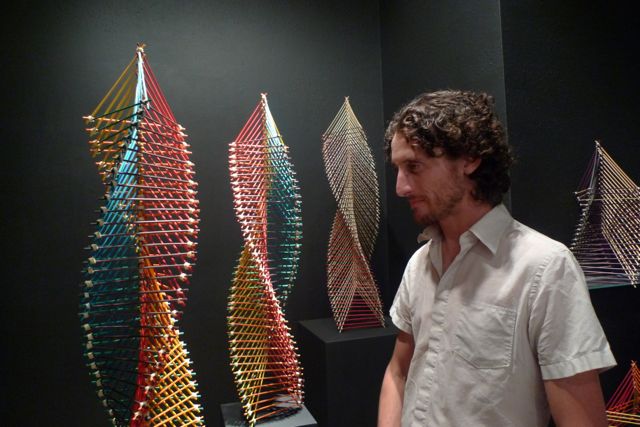Jake is installed in his residency and has been building amazing structures out of multicolored tetrahedrons. The tetrahedron – the simplest of the Platonic solids – can be constructed in two mirror-image configurations, in effect making for a left-handed and right-handed version. The two variations can be easily configured by a simple rearrangement of the colors of the struts. One of Jake’s research projects is an exploration of what kind of structures can be built if you only use either left-handed or right-handed tetrahedra. One early discovery is that when placed in stacks of only one handedness, the tetrahedra form towers that naturally twist into a triple-helix. One tower twists clockwise, the other twists anti-clockwise.
The handedness of tetrahedrons turns out to be central to organic chemistry, which is based on carbon, an atom that forms naturally into tetrahedral molecules. In chemistry one talks about the “chirality” of a molecule, referring to the fact that there can be left-handed and right-handed forms. A chiral molecule will have two distinct forms – known as “enantiomers” – both of which have the same chemical formulae. One entaniomer will be arranged in a left-handed fashion; the other will be right handed. The handedness or chirality of the molecule can be critical to its functioning. A famous case is the drug thalidomide: One of its enantiomers cured morning sickness in pregnant women, the other created birth defects in the fetus. Understanding chiral molecules is a major issue in drug design and in the basic biochemistry of living things.
— Margaret Wertheim, Institute For Figuring
